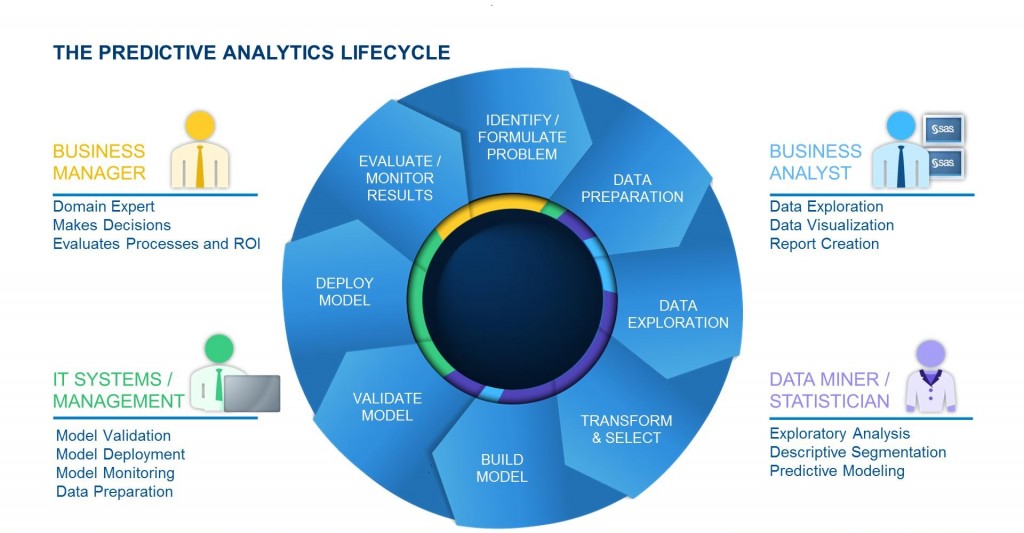The increasing use of predictive analytics in mission-critical business decisions and operations brings new challenges to the forefront for many of our customers. Throughout the last year I spoke to many customers about their use of predictive analytics and where they see areas of improvement to achieve even more success with its application in their organizations. One common theme was that there are other factors besides superior technology that make the difference between success and failure for these kinds of projects. Our most frequently espoused point of view is that the value of advanced analytics is harder to achieve and sell within the organization without also seriously looking at the process and the people that need to be involved.
The predictive analytics lifecycle we have created at SAS has proven to be a process model that works well for these discussions. It is a cross-departmental and cross-functional end-to-end process view that is also industry- and vendor-agnostic. It includes all required stakeholders for success - business, IT and analysts - and provides a clear step-by-step approach to implementing, operationalizing and even automating predictive analytics.
It has been fascinating to be part of discussions between business, IT and analysts and see the passion of the teams to make the use of predictive analytics a contributing factor to the success of the company. The lifecycle model has proven to be very helpful in defining their roles and responsibilities in their specific environment and identifying bottlenecks. Often, these bottlenecks relate to gaps in communication, hand-over definitions and data problems, rather than to problems with the technology, which was the perceived issue that triggered the customer to call us. As a result of the discussions and the mapping of the process model to the organizational structure, roadmaps can be developed to achieve a more productive and efficient use of predictive analytics. A side effect of this often is higher visibility and credibility for the teams involved, as they are seen by senior management as one unit working together with a common blueprint for success.
For me these projects have shown that by supporting our customers not only with great technology (SAS was just named the leader and an “analytics powerhouse” in The Forrester Wave™: Big Data Predictive Analytics Solutions) but also with the soft factors for successful predictive analytics, such as process and people, we can build stronger relationships and become a partner to them. Delivering the technology while enabling the people and the processes help us help our customers. Please let us know if you want to discuss in more detail the implications of process and people on the success of predictive analytics in your organization.








2 Comments
Pingback: Why "soft skills" are so important in analytics....and how to learn them - Subconscious Musings
Pingback: My Homepage